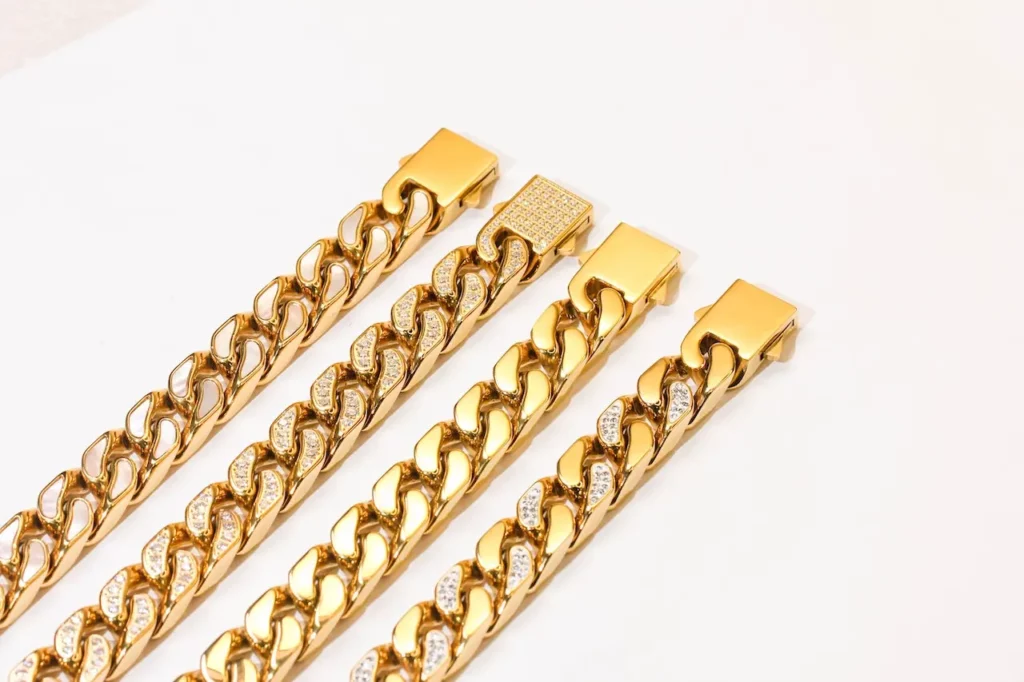
“Chainiste”, a term originating from French, means “chain maker” or “chainist.” This skilled artist specializes in crafting a diverse array of chains, primarily for jewelry. Chains are a fundamental component of jewelry, used in necklaces, bracelets, rings, and various other accessories.
Chainists are artists who are experts in creating chains using various methods. They might use traditional hand forging, carefully shaping each link by hand. Another method they use is wire wrapping, where the wire is wrapped around a core to form a chain. They can also employ modern machinery for accurate and detailed manufacturing.
In this article, we will delve into the skillset and techniques of chainists, understand their significance in the jewelry industry, and look at the journey one takes to become a proficient chain maker. Join us today as we unravel the world of “Chainiste” and the beautiful craftsmanship behind making these lovely chains that decorate our jewelry.
An Enduring Journey from Antiquity to Modern Renaissance
Chains have a rich history dating back to ancient times, with origins traced before 2500 BC when the Egyptians were among the first to design and create them. The Greeks wore gold chains with lovely pendants because there was a lot of gold in Greece. Over time, chains changed from collecting water to becoming detailed artworks. The first metal chain appeared around 225 BC and was initially crafted by English blacksmiths. Over time, chains transitioned into fine jewelry, encircling body parts like the neck, wrists, and ankles, serving as elegant platforms for decorative charms and pendants. Today, chains are experiencing a renaissance, embraced by celebrities and influencers. The allure lies in their timeless appeal and versatility, symbolizing the endless nature of love and connection, dating back to ancient civilizations.
Essential Skills and Qualities for Mastering the Art of Chainiste
Key Skills:
- Crafting Ability: The skill to create intricate and well-crafted chains using various techniques like hand forging and wire wrapping.
- Precision: The ability to be accurate and careful in working with small pieces of metal, ensuring each link is well-formed and reliable.
- Creativity: Coming up with unique and appealing chain designs enhances the aesthetic value of the jewelry.
- Attention to Detail: Noticing and perfecting even the smallest aspects of the chain-making process results in a high-quality end product.
Key Qualities:
- Patience: The quality of staying calm and persistent throughout the chain-making process, even if it takes a long time to complete a chain.
- Perseverance: The ability to keep going and not give up, especially when faced with challenges or complex chain designs.
- Innovation: Being open to new ideas and willing to experiment with different techniques, contributing to the evolution and improvement of chain designs.
- Passion for Craftsmanship: Having a genuine love and enthusiasm for creating chains, which reflects in the dedication and effort put into every piece.
In simple terms, the key skills are the things you learn to make chains effectively, and the key qualities are the special traits that make you good at it and help you enjoy the process. Just like learning to draw (a skill) and having fun while doing it (a quality)!
Crafting Techniques and Methods
In the modern time of chain crafting expertise, mastering the art lies in understanding and employing various crafting techniques and methods. These methods are the heart of this craft, allowing skilled workers to create beautiful chains, often used in jewelry. Central to it are the techniques used, ranging from traditional hands-on shaping of materials to the innovative wire wrapping method allowing intricate designs. Modern machinery has also revolutionized the craft, enhancing precision and efficiency.
Moreover, the methods employed in chain crafting are equally crucial. The step-by-step approach, much like following a recipe, ensures a systematic and organized manner of crafting. Trial and error, an experimental method, encourages creativity and innovation, enabling chainists to explore new designs. Mixing and matching various styles and materials is yet another technique that offers the freedom to craft unique and personalized chains.
The mastery of the “Chainiste” craft is a mixture of honed techniques and thoughtful methods. Through this exploration of crafting techniques and methods, we aim to delve deeper into the intricate world of chains, unraveling the secrets that transform raw materials into delicate works of art.

Let’s understand this in a simple breakdown:
- Hand Forging: Imagine crafting a chain using your hands like molding clay. Chainists shape and mold the metal by hand, adding a personal and unique touch to each chain they create.
- Wire Wrapping: This method is a bit like wrapping a ribbon around a gift but with wire! Chainists wrap the wire around a center, creating beautiful and one-of-a-kind patterns for the chain. It’s like making a special design just for you.
- Machine Manufacturing: Think of this like a robot helper. Chainists use special machines that can make many chains in a very organized way. It’s like a super-fast and precise way of making lots of chains that look the same.
Each of these methods is like a different tool in a chainist’s toolbox, helping them create the chains we love to wear!
Chainiste Significance in the Jewelry Industry
The significance of a jewelry maker in this industry is paramount. They play a crucial role in the creation of jewelry, especially pieces that incorporate chains. It is like a specialized artist in the world of jewelry. They are perfect at crafting chains, which are like the foundation for many types of jewelry, such as necklaces and bracelets. These chains can vary in design, thickness, and style. Imagine a necklace – the chain is like the backbone, holding the necklace together. Without a well-crafted chain, the necklace wouldn’t be as beautiful or durable. They not only make standard chains but can also create custom ones based on what a customer wants. This adds a personal touch to the jewelry, making it unique and special for the wearer. In simple terms, a Chainiste is a chain artist who adds magic to our favorite jewelry!
Final Words
In conclusion, a “Chainiste” is a versatile artist in the world of jewelry-making, mastering the craft of chain creation through a variety of techniques and methods. Just like a skilled painter uses different brushes and colors to create diverse artworks, a chain maker utilizes various approaches to craft chains, each with its unique attributes. They can fashion chains of varying styles, from fine and elegant to bold and robust, catering to a wide range of tastes and preferences.
Materials add another dimension to their artistry, with options like gold, silver, or steel, enabling the artist to achieve different looks and textures in their chains. Ultimately, without the expertise and adaptability of a chain-making artist jewelry industry is nothing, shaping chains that not only furnish but also enhance the beauty of the pieces. They bring art and functionality together, ensuring that chains remain timeless, significant, and appealing in the world of jewelry.

